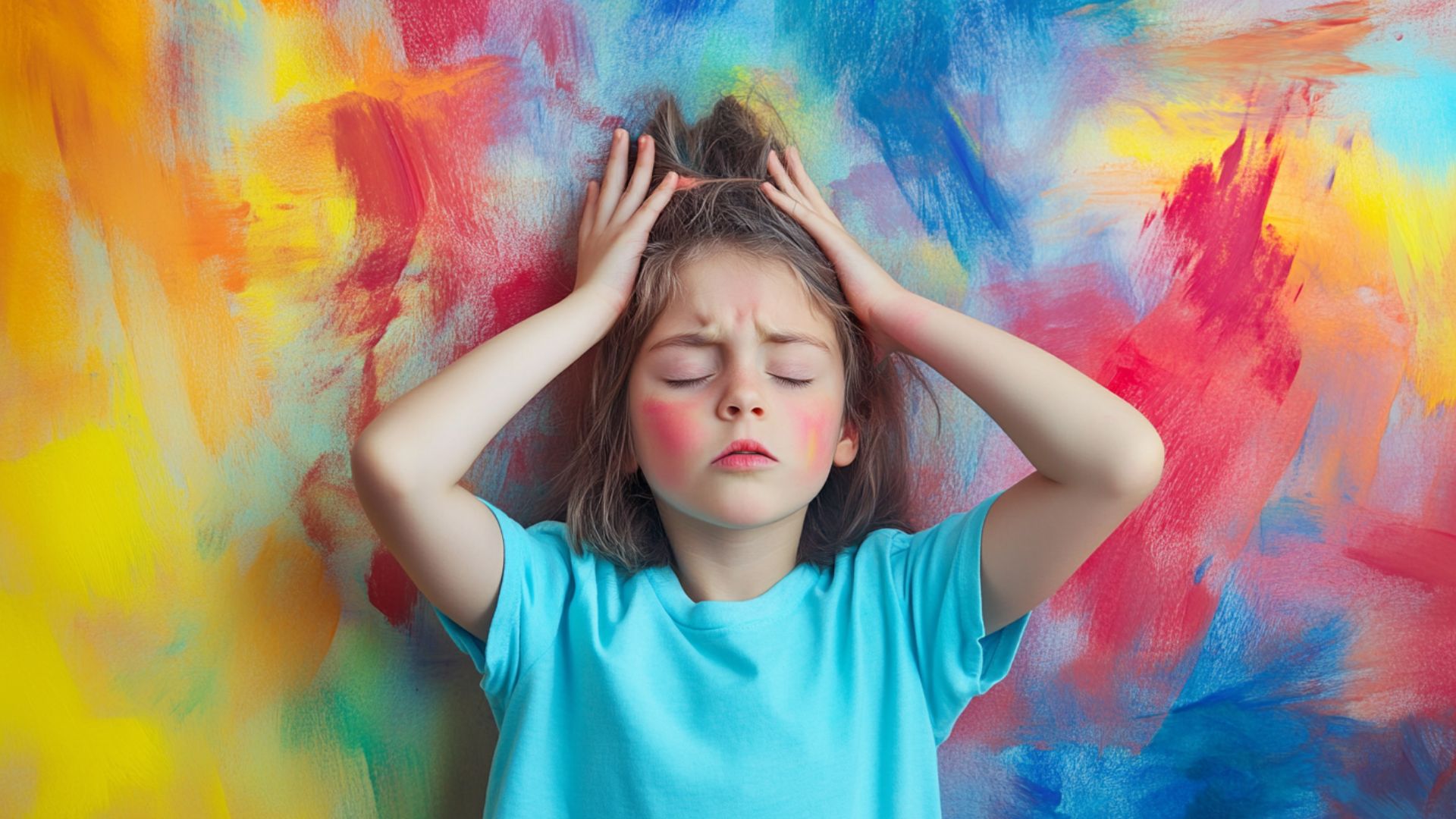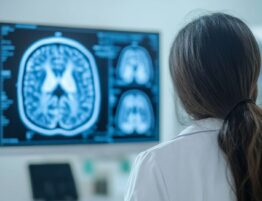Picture a child who can’t sit still in class, constantly gets distracted by sounds, and can’t tolerate certain clothing fabrics. Parents think: “It’s just ADHD.” But what if there’s something bigger behind these symptoms? ADHD sensory processing overlap is a complex neurological phenomenon that often goes unnoticed even by experienced specialists.
The real story of one family illustrates this problem. Eight-year-old Mark was diagnosed with ADHD at six years old. Parents followed all doctors’ recommendations – medication, behavioral therapy, strict daily routine. But problems continued:
- He couldn’t wear jeans, only soft sweatpants
- The sound of the dishwasher running caused tantrums
- In stores, he became aggressive from bright lights and noise
- He refused to eat most foods due to their texture
Doctors explained this as “comorbid problems” with ADHD, but treatment didn’t help. Only after three years did the family learn about the connection between ADHD and sensory disorders.
Many families struggle with behavioral problems for years without understanding the true cause. A child receives an ADHD diagnosis, starts taking medication, but improvements are minimal. Parents feel helpless, and the child continues to suffer. The problem is that neurological sensory disorders often accompany ADHD, creating a complex clinical picture.
Understanding Neurological Sensory Disorders in ADHD Context
Neurological sensory disorders represent disruptions in how the nervous system receives and processes sensory information. This isn’t just “sensitivity” or a child’s “whims.” These are real neurological differences in brain function that affect every aspect of daily life.
ADHD brain function is characterized by peculiarities in the work of the prefrontal cortex and other brain areas responsible for attention and executive functions. But few know that these same areas are closely connected to sensory information processing. Main types of sensory disorders in neurological conditions:
Hyposensitivity (decreased sensitivity):
- Need for strong sensory stimuli
- High pain threshold
- Constant seeking of movement and touch
- May appear as aggressive or uncontrollable behavior
Hypersensitivity (increased sensitivity):
- Avoidance of certain textures, sounds, smells
- Excessive reaction to ordinary irritants
- Quick fatigue in noisy places
- Appears “capricious” or “too demanding”
Sensory seeking:
- Constant search for intense sensations
- Risky behavior to obtain stimulation
- Difficulties with self-regulation
- May look like ADHD impulsivity
Comorbid conditions:
- Anxiety disorders amplify sensory sensitivity
- Autistic traits may be present alongside ADHD
- Learning disorders are linked to information processing problems
- Sleep problems affect sensory regulation
Age-related changes:
- In infants – feeding and sleep problems
- In preschoolers – tantrums and avoidant behavior
- In school children – difficulties with concentration and socialization
- In adolescents – emotional dysregulation and risky behavior
Gender characteristics:
- Girls more often have internalized symptoms
- Boys display more externalized behavior
- Sensory problems in girls are often missed
- Diagnosis in girls is delayed by an average of 2-3 years
Research shows that sensory problems can be the first signs of neurological disorders. Infants with increased sensitivity to sounds, light, or touch have a high risk of developing ADHD in the future.
The Brain’s Sensory Processing Network in ADHD
ADHD sensory processing overlap occurs at the level of brain neural networks. The sensory processing brain includes several key structures that are also affected in ADHD. Understanding this connection helps explain why symptoms often overlap and amplify each other. Key brain areas involved in the process:
Thalamus – the brain’s sensory filter:
- Decides which information is important
- Works inefficiently in ADHD
- Lets through too much or too little stimuli
- Leads to sensory overload or understimulation
Prefrontal cortex – control center:
- Controls attention and behavior
- Integrates sensory information
- Develops more slowly in ADHD
- Difficulties filtering unnecessary stimuli
Cerebellum – movement coordinator:
- Processes vestibular information
- Affects balance and coordination
- Often works atypically in ADHD
- Explains the need for movement
Research shows that in people with ADHD, sensory information is processed differently. This isn’t a defect, but a feature of brain function. Problems arise when the environment doesn’t account for these peculiarities.
Common Symptoms of Sensory Integration Disorder in ADHD
Sensory integration disorder ADHD manifests through multiple symptoms that are often misinterpreted. Neurological symptoms of ADHD include not only the classic triad of inattention, hyperactivity, and impulsivity, but also a wide spectrum of sensory problems. The most common manifestations:
In school and learning:
- Inability to concentrate in a noisy classroom
- Constant fidgeting, need for movement
- Distraction by the slightest sounds or visual stimuli
- Writing difficulties due to fine motor problems
- Avoidance of group activities
In daily life:
- Problems with dressing – certain fabrics cause discomfort
- Food selectivity related to product texture
- Difficulties falling asleep due to hypersensitivity
- Excessive or insufficient reaction to pain
- Problems with personal hygiene (nail clipping, teeth brushing)
In social interaction:
- Avoiding hugs or, conversely, excessive need for them
- Difficulties understanding personal space
- Inappropriate force of touch
- Problems with emotional regulation in groups
- Quick fatigue in social situations
Parents often describe their children as “difficult” or “demanding,” not understanding the neurological basis of this behavior. The child doesn’t choose to be difficult – their nervous system simply works differently.
ADHD Diagnosis Challenges: When Sensory Issues Complicate the Picture
ADHD diagnosis challenges are significantly complicated when sensory problems are present. Many specialists aren’t trained to recognize the connection between these conditions, leading to incomplete or incorrect diagnosis. Main diagnostic problems:
Symptom overlap:
- Hyperactivity may be seeking sensory stimuli
- Inattention – result of sensory overload
- Impulsivity – attempt to avoid unpleasant sensations
- Behavioral problems – reaction to sensory discomfort
Standard examination shortcomings:
- Brief consultations don’t reveal sensory patterns
- Standard tests don’t account for sensory factors
- Focus only on behavioral symptoms
- Ignoring daily sensory difficulties
Family factors complicating diagnosis:
- Parents may not notice sensory peculiarities
- Family adaptation to child’s peculiarities masks problems
- Parent stress and fatigue affect symptom description
- Comparison with neurotypical children creates wrong expectations
The consequences of incorrect diagnosis are serious. A child may receive ineffective treatment for years while real problems remain unaddressed. This leads to symptom amplification, decreased self-esteem, and family stress. Real consequences of undiagnosed sensory problems:
Academic difficulties:
- Decreased performance despite normal intelligence
- Inability to show knowledge on tests
- Avoidance of school activities
- Formation of negative attitude toward learning
Social problems:
- Isolation from peers due to “strange” behavior
- Difficulties with friendship and teamwork
- Misunderstanding social cues
- Development of anxiety and depression
Family conflicts:
- Constant arguments over daily activities
- Parent exhaustion from daily struggles
- Impact on siblings
- Guilt and helplessness feelings in parents
Long-term risks:
- Formation of negative self-esteem
- Increased risk of anxiety disorders
- Problems with career choice
- Difficulties in close relationships in adulthood
Statistics show that children with undiagnosed sensory problems more often lag in studies, have more behavioral problems, experience social difficulties, and develop secondary emotional problems.
Treatment Approaches for ADHD with Sensory Processing Disorders
Treatment of neurological sensory disorders in ADHD context requires a comprehensive approach. Standard ADHD therapy may be ineffective without considering the sensory component. Integration of various treatment methods gives the best results.
Medication therapy with sensory focus:
- Stimulants may improve sensory filtering
- Dosage should consider sensory sensitivity
- More careful monitoring of side effects
- Possible combination with other medications
Sensory integration therapy:
- Work with occupational therapist on sensory integration
- Gradual introduction of various stimuli
- Development of self-regulation and coping strategies
- Creating sensory diet for home and school
Environmental modification:
- Creating sensory-friendly spaces at home
- Working with school on classroom adaptation
- Using sensory tools and accommodations
- Planning activities considering sensory needs
Behavioral strategies:
- Teaching parents to understand sensory signals
- Developing self-regulation skills in children
- Creating predictable routines and transitions
- Using visual schedules and cues
Alternative methods:
- Yoga and mindfulness for children
- Music and art therapy
- Horseback riding and swimming
- Massage and other tactile techniques
The key to success is an individual approach. What works for one child may not suit another. It’s important to find the right combination of methods for each specific case.
Parents play a critical role in treatment. They should:
- Understand their child’s sensory needs
- Advocate for them at school and other places
- Create a supportive home environment
- Collaborate with all team specialists
LoneStar Neurology: Specialized ADHD and Sensory Integration Support
At LoneStar Neurology, we understand the complex interrelationship between ADHD and sensory disorders. Our team specializes in a comprehensive approach to diagnosing and treating these conditions.
Our specialized services:
Comprehensive diagnosis:
- Detailed neurological assessment with focus on sensory aspects
- Standardized sensory processing tests
- Natural environment observation
- Collaboration with occupational therapists and other specialists
Individual treatment plans:
- Integration of medication therapy and sensory interventions
- Coordination with school specialists
- Teaching parents effective strategies
- Regular monitoring and plan adjustment
Innovative methods:
- Using modern diagnostic technologies
- Virtual reality for sensory desensitization
- Biofeedback for self-regulation development
- Telemedicine for remote support
We understand that the path to correct diagnosis can be long and painful. Many families come to us after years of frustration, having been told their child is “just difficult” or “needs more discipline.” We’re here to help you understand what’s happening with your child and find effective solutions.
We know that every child is unique. Our goal isn’t to “fix” the child, but to help them develop their strengths and learn to manage difficulties. We work with families as partners, creating individual solutions for each situation.
If you suspect your child may have not only ADHD symptoms but also sensory problems, don’t delay seeking specialists. Early diagnosis and intervention can dramatically change a child’s developmental trajectory and the wellbeing of the entire family.



 (1 votes, average: 4.00 out of 5)
(1 votes, average: 4.00 out of 5)







Please, leave your review
Write a comment: